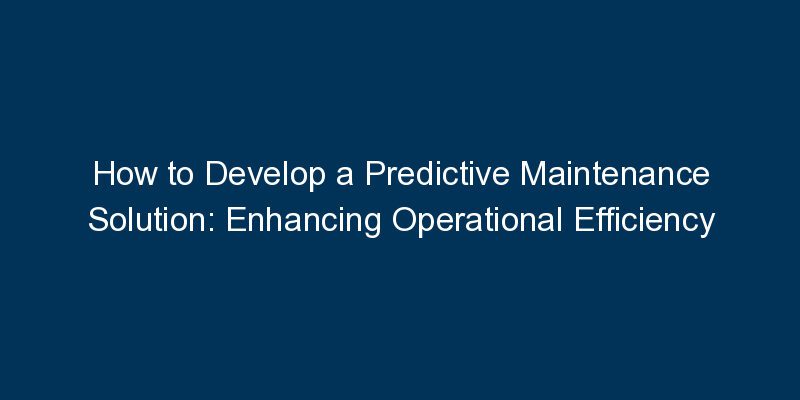Developing a predictive maintenance solution is a strategic move for industries looking to optimize equipment performance and reduce downtime. This blog provides a comprehensive guide on how to develop a predictive maintenance solution, empowering organizations to enhance operational efficiency and prolong the lifespan of critical assets.
Introduction:
Predictive maintenance involves leveraging data and advanced analytics to predict when equipment or machinery is likely to fail. By proactively addressing issues before they lead to breakdowns, organizations can minimize downtime and optimize maintenance schedules. This guide explores the key steps in developing a predictive maintenance solution.
Key Steps to Develop a Predictive Maintenance Solution:
- Define Maintenance Objectives: Clearly define the objectives of the predictive maintenance solution. Identify the critical assets that require monitoring, the desired outcome (e.g., reducing unplanned downtime), and key performance indicators (KPIs) for success.
- Select Sensor Technology: Choose appropriate sensor technologies to collect data from equipment. Sensors may include vibration sensors, temperature sensors, acoustic sensors, and more. Ensure that selected sensors align with the characteristics of the assets being monitored.
- Implement IoT Connectivity: Enable IoT connectivity to transmit data from sensors to a centralized platform. IoT connectivity allows for real-time data collection, enabling continuous monitoring of equipment health and performance.
- Utilize Predictive Analytics: Implement predictive analytics algorithms to analyze the collected data. Machine learning models can identify patterns and anomalies, predict potential failures, and provide insights into the remaining useful life of equipment.
- Integrate with Maintenance Management Systems: Integrate the predictive maintenance solution with existing maintenance management systems. This ensures seamless communication between the predictive analytics platform and the tools used for scheduling and executing maintenance tasks.
- Establish a Feedback Loop: Create a feedback loop that allows the system to learn and improve over time. Regularly update the predictive models based on new data and insights gained from equipment performance and maintenance outcomes.
Conclusion:
Developing a predictive maintenance solution is a proactive approach to optimizing operational efficiency and prolonging the lifespan of critical assets. By following the steps outlined in this guide, organizations can harness the power of predictive analytics to transform their maintenance practices, reduce costs, and enhance overall operational performance.






















Comments